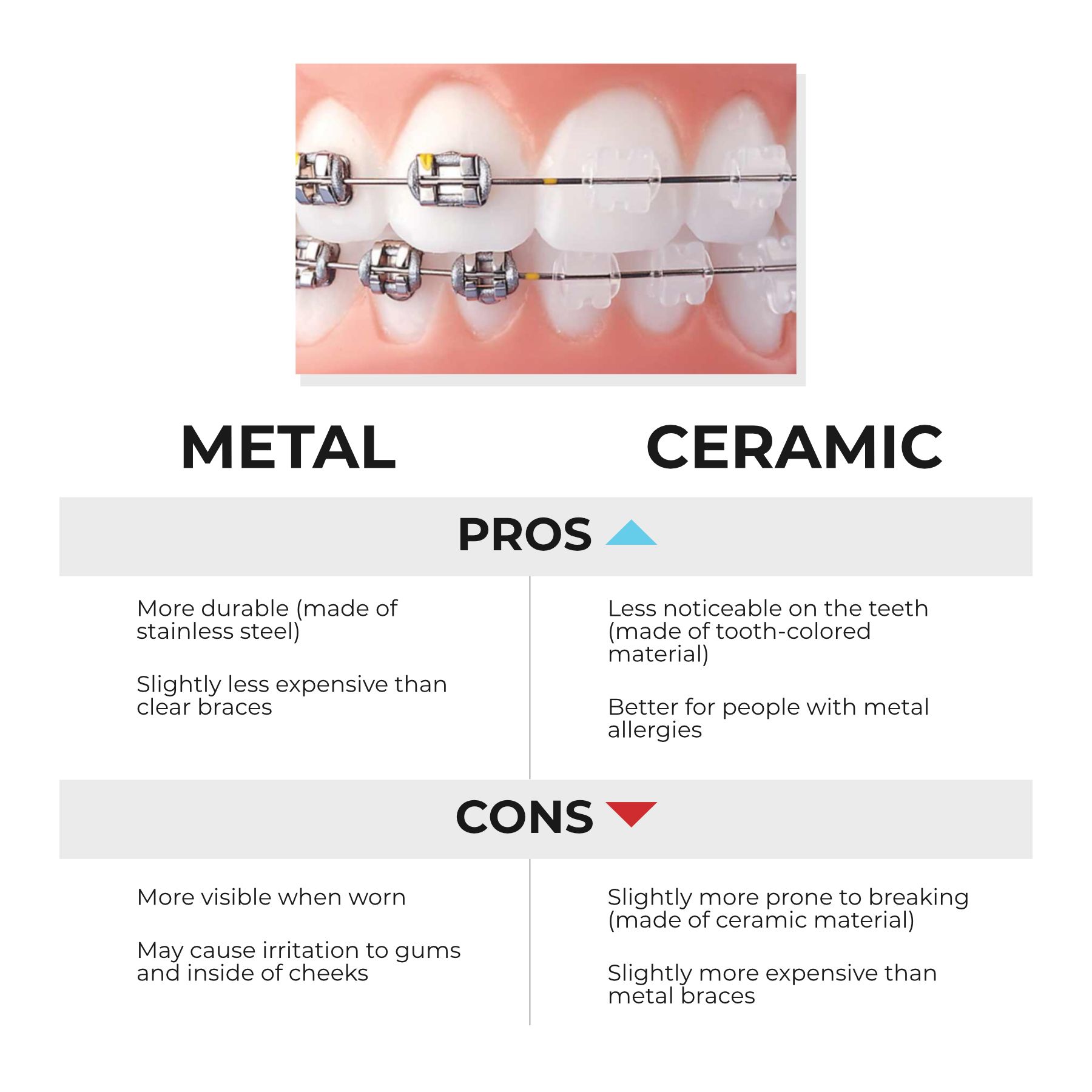Brandon Boggan has been practicing orthodontics full-time since 1998. He is the Chief Smile Engineer and the CFO (Chief Fun Officer) at Ortho South in Pelham and Calera, Alabama. His love for people, marketing, and helping other orthodontists grow their practice led him to start a brand and website development and digital marketing company called Onboard Marketing Group. You can find Brandon on LinkedIn, OrthoSouth.com, or OnboardMG.com.
Ceramic Braces vs. Metal Braces: Pros, Cons, and Cost

By Dr. Brandon Boggan
Share This

By Dr. Brandon Boggan
If you're considering orthodontic treatment, you may be wondering whether metal or ceramic braces (or clear braces) are the right choice for you. Both types of braces are effective at straightening teeth, but they have their own unique pros and cons. Let’s explore the differences between metal and ceramic braces to help you make an informed decision.
Braces consist of several parts:
- brackets, which are square structures that fix to each tooth
- an archwire, which connects each bracket
- elastic bands called “o-ties”, which fit around the brackets and hold the wire in place. These o-ties can be nearly any colored and can be changed at each appointment.
First, let's start with a brief overview of each type of braces. Metal braces are the most traditional type of braces and are made of stainless steel. They are more visible when worn, but they have become smaller and more comfortable over time.
Ceramic braces are made of a transparent or tooth-colored material and are less noticeable on the teeth. They are made of a ceramic material, which is slightly more fragile than stainless steel. They are considered more esthetic by most people.
Now, let's look at the pros and cons of each type of braces.
One of the main advantages of metal braces is their durability. Stainless steel is a strong and long-lasting material, so metal braces can withstand the wear and tear of daily life. They are also generally slightly affordable than ceramic braces.
One of the main advantages of ceramic braces is their appearance. Because they are made of a tooth-colored material, they are less noticeable on the teeth than metal braces. This can be especially appealing for those who are self-conscious about the appearance of braces.
However, there are also some drawbacks to consider. One of the main disadvantages of metal braces is their appearance. Because they are highly visible when worn, some people may feel self-conscious about their appearance. They may also be more prone to causing irritation to the gums and inside of the cheeks.
One of the main disadvantages of ceramic braces is their fragility. Because they are made of ceramic, they are more prone to breaking or chipping than metal braces.
Ultimately, the decision between metal and ceramic braces comes down to personal preference and the specific needs of the patient. Both types of braces are effective at straightening teeth, but ceramic braces may be a better option for those who are concerned about the appearance of braces, while metal braces may be a better choice for children and teenagers who are more active. It's important to consult with an orthodontist to determine the best option for your needs and to get a clear idea of the cost and duration of treatment.

Pros and cons of metal braces
- Advantages:
- More durable (made of stainless steel)
- Slightly less expensive than clear braces
- Disadvantages:
- More visible when worn
- May cause irritation to gums and inside of cheeks
Pros and cons of ceramic braces
- Advantages:
- Less noticeable on the teeth (made of tooth-colored material)
- Better for people with metal allergies
- Disadvantages:
- Slightly more prone to breaking (made of ceramic material)
- Slightly more expensive than metal braces
Conclusion
- The decision between metal and ceramic braces comes down to personal preference and the specific needs of the patient
- Both types are effective at straightening teeth, but ceramic braces may be better for patients concerned about appearance.
- Consulting with an orthodontist may be the best way to determine which option is right for you.
Dr.
Brandon Boggan and Dr.
Zehra Syed are more than happy to sit down with you to discuss which option may best suit your needs.
Share This













